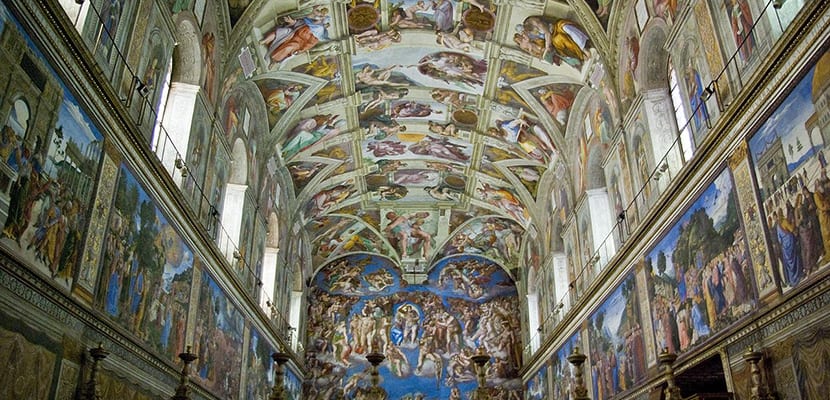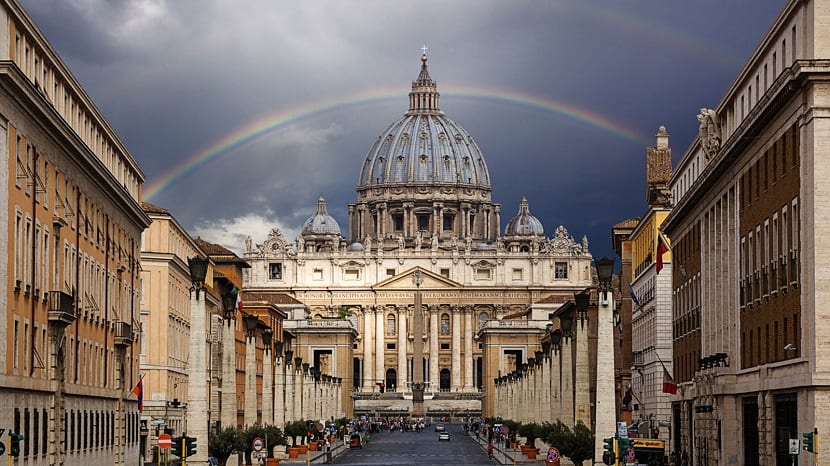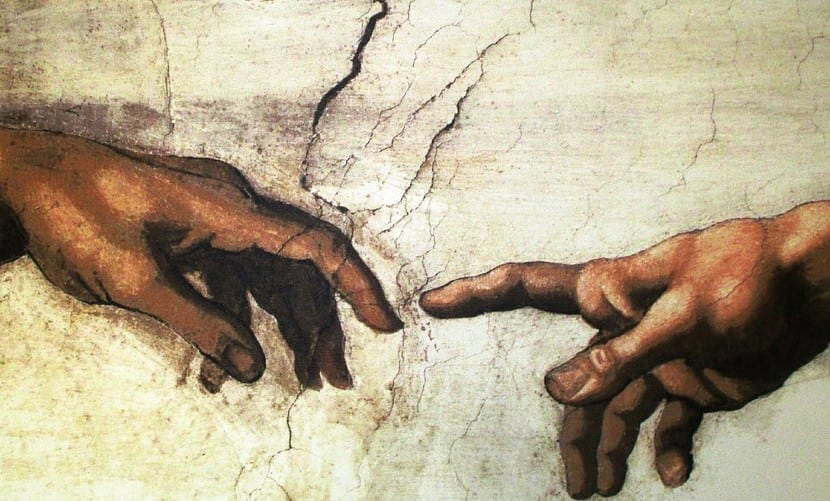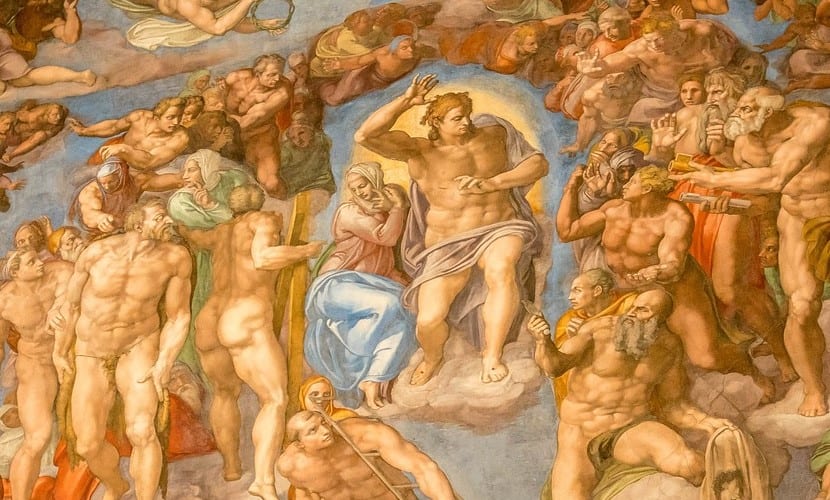
Considered one of the best works of Michelangelo and one of the greatest treasures of the Vatican, the Sistine Chapel is one of those places that everyone should visit at least once in their life.. Not only for its artistic importance but also for its deep spiritual significance.
If you are planning a trip to Rome and you have marked a visit to the beautiful Sistine Chapel on your route, in the next post we will tell you all about this special place in the Vatican. Do not miss it!
History of the Sistine Chapel
The Sistine Chapel is the best-known room in the Apostolic Palace in Vatican City, the official residence of the Roman Pope.
In its origins it was the chapel of the Vatican fortress and received the name of Cappella Magna. It is not until the 1473th century when it takes its current name from Pope Sixtus IV, who between 1481 and XNUMX ordered its restoration. The architect in charge of the works was Giovanni de Dolci, while artists such as Botticelli, Perugino, Luca and Michelangelo took care of its ornamentation, although its fame is especially due to its fresco decoration, the latter's work.
Since then the Sistine Chapel has served to celebrate various acts and papal ceremonies. Currently it is the space where the cardinal electors of the College of Cardinals choose a new pontiff.

What is the Sistine Chapel like?
On the occasion of the conclusion of the restoration work of the Universal Judgment in 1994, Pope John Paul II pointed out in the homily of the Mass that he celebrated there:
The frescoes that we contemplate here introduce us to the world of the contents of Revelation. The truths of our faith speak to us from every place. From them, the human genius has drawn inspiration by insisting on covering them with forms of incomparable beauty.
With these words the Pope wanted to emphasize the sacred character of the Sistine Chapel, whose images, like those in a book, serve to make the Holy Scriptures more understandable.
At first, the decoration of the chapel in the XNUMXth century included the false curtains, the stories of Jesus (north walls - entrance), Moses (south walls - entrance) and the portraits of the pontiffs to date (north - south walls - entry).
It was made by a varied team of artists such as Pietro Perugino, Sandro Botticelli or Domenico Ghirlandaio, Cosimo Rosselli, among others. Above the vault, Pier Matteo d'Amelia painted a starry sky. The execution of the frescoes took place between 1481 and 1482. The marble works such as the barricade, the papal shield above the entrance door or the choir also date back to this time.
Some time later, Pope Sixtus IV consecrated the new chapel to the Assumption of the Virgin and his nephew Julius II, also pontiff between 1503 and 1513, decided to modify its decoration by commissioning Michelangelo in 1508, who painted on the starry vault and the lunettes, in the upper part of the walls, with scenes from Genesis such as the creation and fall of the human being or the universal flood. In 1512, when the works were finished, the pope inaugurated the new Sistine Chapel with a solemn mass.

Image | Pixabay
Michelangelo's work
The ceiling of the Sistine Chapel
Michelangelo took four years to paint all the frescoes in the vault of the Sistine Chapel and did so from 1508 to 1512. The images on the ceiling tell nine stories from Genesis that occupy the central part.
Adan creation
Without a doubt, The Creation of Adam is the most popular image of the Sistine Chapel. It is located in the central part of the vault and represents the story of Genesis in which God creates Adam.
The final judgement
On the main altar stands the other masterpiece by Michelangelo, The Last Judgment, which represents the Apocalypse of Saint John. It took the artist five years to decorate the apse and it was commissioned by Clement VII to cover the murals that existed up to that time.

Image | Pixabay
Visit the Sistine Chapel
To visit the Sistine Chapel, you must access the Vatican Museums, the European tourist attraction with the longest entry queues that can last up to four hours. The best time to go is around 13:00 p.m. during the week but if you don't want to spend a lot of time in the queue it is better to avoid the last Sunday of each month (because it is free between 9:00 a.m. and 12:30 p.m.) and the Easter, as well as the high season.
Vatican Museum tickets also include entry to the Sistine Chapel. It should be noted that it is possible to get tickets online but they can also be purchased at the box office for a general price of € 17,00 and a reduced price of € 8.